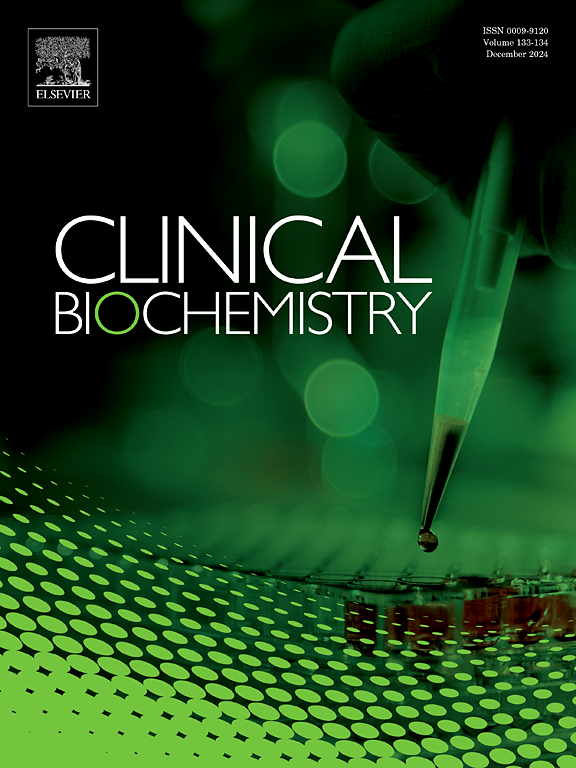Low serum thyroglobulin level in A 15-year-old girl with papillary thyroid cancer and multiple neck lymph nodes: a case report
IF 2.1
3区 医学
Q2 MEDICAL LABORATORY TECHNOLOGY
引用次数: 0
Abstract
Background
Papillary thyroid carcinoma (PTC) is the most common form of differentiated thyroid cancer. Serum thyroglobulin (Tg) is a key biomarker used in postoperative surveillance. However, discrepancies between Tg levels and disease burden may occur, complicating clinical assessment. The report herein proposes to discuss such a case.
Case presentation
We present a case of a 15-year-old girl with a history of total thyroidectomy for PTC (age 13) who developed a new vascular neck mass. Sonographic and cytologic evidence confirmed metastasis. Serum Tg levels (evaluated using concurrent immunoassays and liquid chromatography – tandem mass spectrometry) were detectable, but not proportional to the extent of disease burden, while the fine-needle aspirate (FNA) Tg levels were markedly elevated, consistent with metastatic disease.
Discussion
This case illustrates a phenomenon in which the degree of Tg elevation in serum is not proportional to the extent of metastatic disease. We discuss the analytical and biological factors that can contribute to this discordance and highlight the importance of multimodal monitoring strategies.
Conclusion
Clinicians should be aware that any detectable serum Tg in athyreotic patients indicates residual thyroid tissue or disease. However, this might not necessarily correlate well with the degree of metastatic disease. The integration of imaging, FNA cytology, and aspirate Tg measurement is essential for accurate disease assessment, particularly in cases with discordant laboratory findings.
15岁女童甲状腺乳头状癌伴多发颈部淋巴结低血清甲状腺球蛋白1例。
背景:甲状腺乳头状癌(PTC)是最常见的分化型甲状腺癌。血清甲状腺球蛋白(Tg)是术后监测的关键生物标志物。然而,Tg水平与疾病负担之间可能存在差异,使临床评估复杂化。本报告拟讨论这种情况。病例介绍:我们报告了一个15岁的女孩,她有甲状腺全切除术的PTC病史(13岁),她出现了一个新的血管性颈部肿块。超声和细胞学证实有转移。血清Tg水平(使用同步免疫测定和液相色谱-串联质谱法评估)可检测到,但与疾病负担程度不成比例,而细针抽吸(FNA) Tg水平明显升高,与转移性疾病一致。讨论:本病例说明了血清中Tg升高的程度与转移性疾病的程度不成比例的现象。我们讨论了可能导致这种不一致的分析和生物学因素,并强调了多模式监测策略的重要性。结论:临床医生应该意识到,任何可检测到的甲亢患者血清Tg表明残留的甲状腺组织或疾病。然而,这可能并不一定与转移性疾病的程度密切相关。影像学、FNA细胞学和抽吸Tg测量的整合对于准确的疾病评估至关重要,特别是在实验室结果不一致的情况下。
本文章由计算机程序翻译,如有差异,请以英文原文为准。
求助全文
约1分钟内获得全文
求助全文
来源期刊

Clinical biochemistry
医学-医学实验技术
CiteScore
5.10
自引率
0.00%
发文量
151
审稿时长
25 days
期刊介绍:
Clinical Biochemistry publishes articles relating to clinical chemistry, molecular biology and genetics, therapeutic drug monitoring and toxicology, laboratory immunology and laboratory medicine in general, with the focus on analytical and clinical investigation of laboratory tests in humans used for diagnosis, prognosis, treatment and therapy, and monitoring of disease.
 求助内容:
求助内容: 应助结果提醒方式:
应助结果提醒方式:


